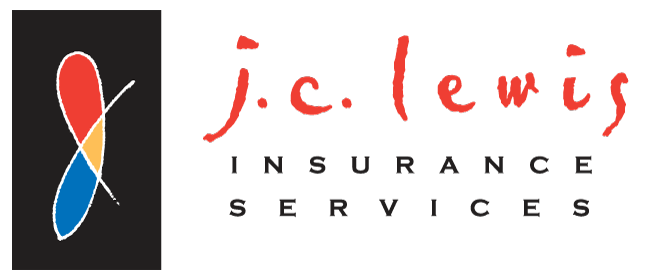One of the positive aspects of being able to offer health care plans for your employees is the range and variety of options. However, this is also one of the challenges since you should know enough about each of the options to make informed decisions.
Wading Through the Alphabet Soup of Health Plans
We’ve mentioned most of the available health plan types in a number of previous posts here, and have gone a bit in-depth on a few of those. Most of us have heard of HMOs and PPOs. In addition, there are Exclusive Provider Organizations (EPOs) and Point-of-Service (POS) plans.
Along with the plan types, there are Health Savings Accounts (HSA) and Health Reimbursement Arrangements (HRA). If you’re a small business owner who wants to offer some quality and comprehensive plans for your employees, it pays to understand what is available to you.
In addition, we recently discussed a specific aspect of the health care plan market known as “consumer-driven health plans” and which ones are considered part of that umbrella of plans.
In this post, we want to go a bit further in-depth with a specific type of consumer-driven health plan option known as High Deductible Health Plans, or HDHP, and how they are often combined with Health Savings Accounts or HSAs.
Understanding the Dynamics of an HDHP
For a basic explanation of a high deductible health plan, we can look to the Healthcare.gov website:
“A plan with a higher deductible than a traditional insurance plan. The monthly premium is usually lower, but you pay more health care costs yourself before the insurance company starts to pay its share (your deductible). A high deductible plan (HDHP) can be combined with a health savings account (HSA), allowing you to pay for certain medical expenses with money free from federal taxes.
For 2020, the IRS defines a high deductible health plan as any plan with a deductible of at least $1,400 for an individual or $2,800 for a family. An HDHP’s total yearly out-of-pocket expenses (including deductibles, copayments, and coinsurance) can’t be more than $6,900 for an individual or $13,800 for a family. (This limit doesn’t apply to out-of-network services.)”
Essentially, an HDHP is a health insurance plan with lower monthly premiums, making it more “affordable” upfront for a member. However, it comes with significantly higher deductibles than more traditional health plans, which means greater “out of pocket” costs for members when they make use of their coverage.
These plans were designed primarily to incentivize consumer-driven healthcare and are a form of catastrophic coverage, intended to cover for catastrophic illnesses. Being covered by an HDHP is also a requirement for having a health savings account, or HSA.
HDHPs are also somewhat controversial in the realm of healthcare coverage. Advocates of consumer-driven healthcare contend that HDHPs help to minimize imprudent use of healthcare by patients by holding them financially responsible through high copayments and deductibles.
Critics claim, however, that evidence shows that high deductible plans may actually serve to dissuade patients from making preventive care visits and avoiding needed ambulatory care, especially for those with chronic conditions or in a low socioeconomic level.
How an HDHP Works for Members
A high deductible health plan requires a much lower monthly premium payment but is offset by a higher annual deductible. Currently (2020), a minimum deductible for an HDHP is $1,400 for an individual and $2,800 for a family.
This means that, in practice, your employees can expect to have a deductible of at least that amount and possibly quite a bit higher if they enroll in a HDHP. However, the annual out-of-pocket expenses are limited to $6,900 for an individual and $13,800 for a family.
In theory, a single and healthy employee could make minimal use of an HDHP and cover any out-of-pocket costs incurred during the year with funds from an associated health savings account, or HSA.
Health savings accounts were created to help offset the cost of HDHP deductibles and are only open to those enrolled in HDHPs. They provide a non-taxed way to save for healthcare costs. While there are annual contribution limits, HSAs allow employees to roll over their balance from year to year. In addition, your contributions into an HSA are pre-tax dollars, which is a big advantage for employees, as well.
For 2020, the HSA contribution limit is $3,550 the cap on contributions has been increasing about $50 a year to adjust for inflation.
The Balance website notes that some of the advantages of health savings account, such as:
- You can put money into your HSA before it is taxed. This means you can put up to the specified limit aside in your health savings account, tax-free.
- Interest gained on your money in an HSA is also tax-free.
- If you do not use the money in your HSA, it carries over for the next year, you do not lose your savings.
Your Local Expert for Small Business Health Insurance Needs
JC Lewis Insurance is a knowledgeable group of expert brokers offering California employers health insurance plans only from leading health insurance carriers licensed to do business in California.
In addition, we are licensed and certified by each of these insurance carriers to offer coverage to individuals, families, and small group employers in addition to Medicare supplemental and prescription drug plans for Seniors. We assist small business employers with the initial set-up, annual renewal, and on-going maintenance needed.
If you’re a small business owner who wants to provide insurance coverage for your employees, you likely have many questions and concerns. Bring your questions about small group insurance and you can be confident that JC Lewis Insurance Services will help you find the right solution.

